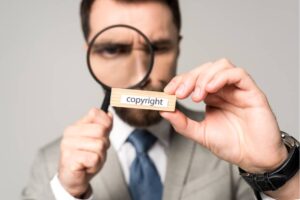Every year, a fresh batch of formerly copyrighted works enters the public domain, at which time they essentially belong to everyone.
Table of Contents
ToggleWhat are “Copyrighted Works?”
Copyright protects creative works like movies, books, plays, paintings, sculptures, sound recordings, software, and architecture.
Copyright is the reason you can’t print copies of the latest Stephen King novel and sell them on Amazon, and why you can’t show last year’s blockbuster superhero movie in your backyard and charge admission. Copyright prevents others from duplicating or using creations without permission. And even when permission is granted it often comes at a price, in the form of potentially staggering licensing fees.
Profiting from the Public Domain
When works enter the public domain, it opens new possibilities for profit.
For example, there’s a cottage industry built around republishing books and making art prints from works in the public domain, then selling them on platforms like Amazon and eBay.
Filmmakers can remake movies in the public domain without having to pay hefty licensing fees, and make money on those flicks, too.
Advertising agencies can borrow snippets from those same movies and clips from public domain music and use them freely in TV commercials.
You get the idea.
Country Matters in Copyright
It’s important to note that when a work enters the public domain in a particular country, it may still be protected by copyright elsewhere in the world.
Trademarks Could Make It Tricky
Before you dive in and start repackaging and selling works that are fresh to the public domain, it’s worth considering whether some aspect of a work could be considered a trademark.
Where copyright protects creative works, trademarks protect brands and commercial identities. Trademarks often take the shape of business names, slogans, and logos.
Unlike copyright protection which eventually expires, trademark protection can be perpetual.
There can be a thin line between copyright and trademarks. For example, Disney is bracing for the expiration of the copyright for Steamboat Willie, the first Mickey Mouse movie, in 2024. Inarguably, no image represents the Disney brand more definitively than Mickey. We may see Disney try to block the use of Mickey’s image from Steamboat Willie once it enters the public domain, arguing that the character of Mickey Mouse is a trademark and deserves protection under trademark law.
Public Domain Stand-Outs for 2023
Here are some of the well-known works that entered the public domain on January 1, 2023:
Books
- Amerika – Franz Kafka
- Aspects of the Novel – E.M. Forster
- The Big Four – Agatha Christie
- The Bridge of San Luis Rey – Thornton Wilder
- The Case-Book of Sherlock Holmes – Arthur Conan Doyle
- The Colour Out of Space – H.P. Lovecraft
- Death Comes for the Archbishop – Willa Cather
- The Future of an Illusion – Sigmund Freud
- The Gangs of New York – Herbert Asbury
- In Another Country – Ernest Hemingway
- The Killers – Ernest Hemingway
- Mosquitoes – William Faulkner
- Men Without Women – Ernest Hemingway
- Now We Are Six – A.A. Milne
- Steppenwolf – Hermann Hesse
- The Treasure of the Sierra Madre – B. Traven
- To the Lighthouse – Virginia Wolff
- Twilight Sleep – Edith Warton
Movies
- 7th Heaven
- The Beloved Rogue
- Casey at the Bat
- The Cat and the Canary
- Chicago
- The Great Leap
- It
- The Jazz Singer
- The Kid Brother
- The Lodger: A Story of the London Fog
- London After Midnight
- Metropolis
- The Mystery of the Louvre
- Wings
- Sunrise
- Tarzan and the Golden Lion
- Uncle Tom’s Cabin
- Underworld
- The Unknown
- The Way of All Flesh
- When Boys Leave Home
Music
- “The Best Things in Life Are Free”
- “Blue Skies”
- “(I Scream You Scream, We All Scream for) Ice Cream”
- “Let’s Kiss and Make Up”
- “Me and My Shadow”
- “My Blue Heaven”
- “Ol’ Man River”
- “‘S Wonderful”
Do you have trademark or copyright questions? Contact Sanchelima & Associates today for straightforward, no-nonsense legal guidance. We’ll make it clear!


